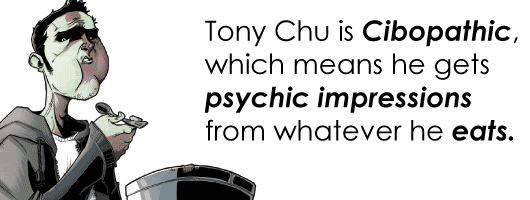FADE IN:
INT. LEARNING ANNEX-DAY
Close-up of immaculately white orthopedic shoes hurriedly walking down dim, dirty corridor.
NARRATOR (v.o)
It all started when I failed my NCLEX-RN exam.
Shoes scuff into tarnished metal paneling on door and back up, a hand reaches down and tries to rub out scuff on shoe before giving up. The door opens and the shoes enter the room. Door closes with squeaky hinges and loud slam.
NARRATOR (v.o.)
No, scratch that. It all started when I went in the wrong room and took the wrong exam.
Pan of nearly-empty room sparsely occupied with people who are obviously not nursing candidates followed by mid-shot of NARRATOR’S back from the shoulders down. Here it is revealed that even though her shoes were white, everything else she’s wearing is dark blue.
NARRATOR (v.o)
You’d think I would’ve figured out that it wasn’t the right test, but hell, I didn’t have breakfast that morning, so my mind was on other things … like French toast and cinnamon rolls.
Close-up of exam question reading: “What are the best points on the body to cut in order to maximize blood loss in the least amount of time available for the appearance of a suicide?”
NARRATOR (v.o.)
Another hint would have been questions like this. The NCLEX-RN only had multiple-choice questions the first time I took it. Then again, I had heard that they were trying something new with the format and using short answer, essay questions, maybe a few calculations for medication dosages. I didn’t think that they’d change the wording around that much.
Camera follows motion of pencil writing in answer: “A puncture wound or incision along the radial veins or jugular vein and carotid artery would cause a type III or IV hemorrhage, resulting in tachycardia and a drop in blood pressure. Most suicides have multiple, or hesitation, cuts.”
NARRATOR (v.o.)
It’s sort of scary how easy it is to apply knowledge usually used to save lives in order to take them. Either that, or perhaps I really wasn’t fated to be a nurse after all. I’ll get to that bit about fate later, though.
CUT TO INT. NARRATOR'S APARTMENT-DAY
Close-up of NARRATOR’S hands carefully opening envelope with scalpel.
NARRATOR (v.o.)
Almost as soon as I got the results back from my exam, I received my first “assignment.” (pause) What? That’s my lucky scalpel. I figured it couldn’t hurt, considering I failed the NCLEX-RN exam the first time.
CUT TO HOSPITAL-DAY
DOCTOR
Good afternoon.
NARRATOR tips imaginary hat to DOCTOR before turning into a patient’s room.
NARRATOR(v.o.)
The setup was simple enough. I took care of a particular coma patient’s neighbor for a few weeks and then administered a “special” injection into the IV drip of the fellow next door.
Close-up of NARRATOR’S hands holding hypodermic needle injecting fluid into IV drip.
NARRATOR (v.o.)
It’s funny what just the right amount of potassium will do to a person.
PATIENT shakes while electrocardiogram BEEPS rapidly followed by steady flatlining tone.
NARRATOR (v.o.)
In the immediate sense, it just looks like a heart attack. But by the time the autopsy results come back, I’m long gone.
Door opens and slams shut as NARRATOR hurriedly walks by in jeans and hooded sweatshirt, throwing nurse’s uniform, gloves and needle into red bin labeled “biohazardous material” in black letters.
EXT. HOSPITAL ALLEY-DAY
Back door opens and slams shut as NARRATOR continues walking down darkened alley, hunched with sweatshirt hood obscuring most of her face.
Narrator (v.o.)
Fortunately for me, the turnover at that particular hospital was so high that none of the doctors, or anyone else for that matter, would ever remember my name.
CUT TO FLASHBACK
DOCTOR
Good Afternoon.
Quickly cut multiple shots of various Filipina faces smiling warmly, slowly walking past and entering the PATIENT’S room.
NARRATOR (V.O.)
You’ll notice that he/she didn’t even bother saying my name. Doctors tend to be like that. Sometimes I wonder if they even remember their patients’ names. That was partially why I never went to med school. I wanted to be able to take care of people, not just “treat ailments.” The other reason was my parents, but I’ll get into that later. Either way, it always seemed that way for Filipina nurses, like we were invisible. We always just looked the same to them.
CUT BACK TO EXT. ALLEY-DAY
NARRATOR takes hood off upon entering sunlit street from dark alley revealing that yes, she is an almost non-descript, average-looking Filipina.








No comments:
Post a Comment